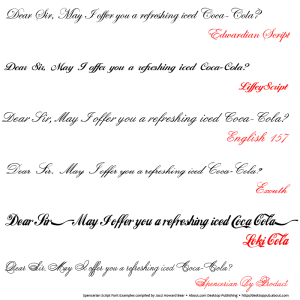
Q: Have any of you faced the decision in homeschooling yet as to what scripts to teach to your kids, and if you have, what was the key reason for the choice? Are any of you teaching Italic Handwriting instead of D’ Nealian for example?
***
My eldest is learning D’ Nealian script in their local Japanese school. But I have never used D’ Nealian before myself, and I personally don’t like any cursive script that has lots of loops and that is overly fussy.
I am most amused that the Japanese school is teaching D’Nealian. I always thought schools taught manuscript style…I like the ‘being different’ :)At least 5 years ago, most material from UK or Australia were Italic or something similar.
SouthEast Asian International schools that I looked at seemed to teach Italic.
Based on the school catalogs and walking into teacher supply stores in the US, I guess that D’Nealian is most popular in the U.S.
I have never understood the attachment to one style of writing, and also understand certain particular letters within some styles causing confusion. At these times, I would show even the youngest children the different styles, and explain that people choose to form some letters differently.
I have always shown two ways of writing ‘a’ so that kids would realize what the funny looking ‘a’ in most books and PC fonts is. I chose to learn Italic, and used it consistantly to teach as it was easy for me. Probably with my final child I will give him the choice of which style he wants to learn, and I will practice with him. — R.
***
What a wonderful idea, M.-!! I still have my grandmother’s letters. I showed them to the kids as well as my parents’ Palmer methods but it had not occurred to me to use them as the model for penmanship!! I was not taught very well and hadn’t thought that one could start out with a lovely skill if taught properly. I may try to correct the damage!! My mother said they spent weeks just learning loopty loops. It paid off for the earlier generations. I will go and look through the letters. Great idea!!
A.
***
In the United States, D’ Nealian. My daughter was in the first grade when we left in December. I know they start using that script in kindergarten in Virginia. — A.
***
DS1 (4th grade) decided he wanted to focus on cursive this year, so I looked over some options and went with Getty-Dubay Italic program (which I purchased from Sonlight with some other books). I had a cousin who was a graphic artist and had the most beautiful italic handwriting and I have always wished I could write like he did. Well, DS took one look at the text and nixed it in an instant, saying he wanted to write like I do, all curly. Ugh. So, I’m thinking we’ll get comfortable with usual cursive(D`Nealian-ish) and then hopefully, hopefully slide on into something more beautiful.
It will benefit him to be able to read D’Nealian, so it’s definitely not a waste of time, and it is speedier than print.
Anyway, my 2 yennies,
J. in Fukushima
***
Related reading:
Handwriting Styles (Drawing and writing lessons for children)
How to help your child with handwriting practice
Decision: Cursive or Manuscript Handwriting?
Wrapping up the topic, a good resource to use for exploring your handwriting options is Handwriting Styles at DrawYourWorld.com. The website has handwriting charts, samples and also practice sheets that you can use.
Some handwriting sample scripts below:
D’ Nealian style manuscript
(Mrs Reeve’s) Cursive handwriting practice pages


Zaner-Bloser| practice pages here
Basic italic
K-gr. 4 Modern italic handwriting resources
See sample pages of basic italics (Penny Gardner)
Penny Gardner’s “Italics, Beautiful Handwriting for Children” has 14 lessons that teach basic italics. There are extra practice pages with words and sentences for the child to trace and then copy. It is best to be right there to reinforce the proper way to form letters–it will pay off in the long run. Once basic italic is mastered, use this new skill to do meaningful copy work–a few models are included in my book. There is no need to purchase handwriting workbooks for every year when you follow Miss Mason’s ideas of using copy work for meaningful penmanship practice.
To take handwriting to the level of an art, see more below on the art of calligraphy:
Calligraphy penmanship script (see Starting out and gallery of calligraphy:
Manuscript Italic:

Calligraphy Chancery / Chancellerie script:

Calligraphy penmanship resources:
1. “Calligraphy, Art & Colou”r by Peter Halliday (paperback written for children)
2. “Calligraphy Step by Step” (with Anna Ravenscroft) by Gaynor Goffe
3. “Calligraphy made easy” by Gaynor Goffe
No. 1 – a fine introduction for any age. His other books address a more experienced audience and are well worth finding for inspiration
No. 2 has much to inspire from beginner to advanced, no. 3 book is very accessible & highly recommended for beginners, often republished. Gaynor Goffe taught at Roehampton, Reigate school of Art and Kensington Palace
For manuscript calligraphy supplies, see the Calligraphy company page.



I like this article , readable content